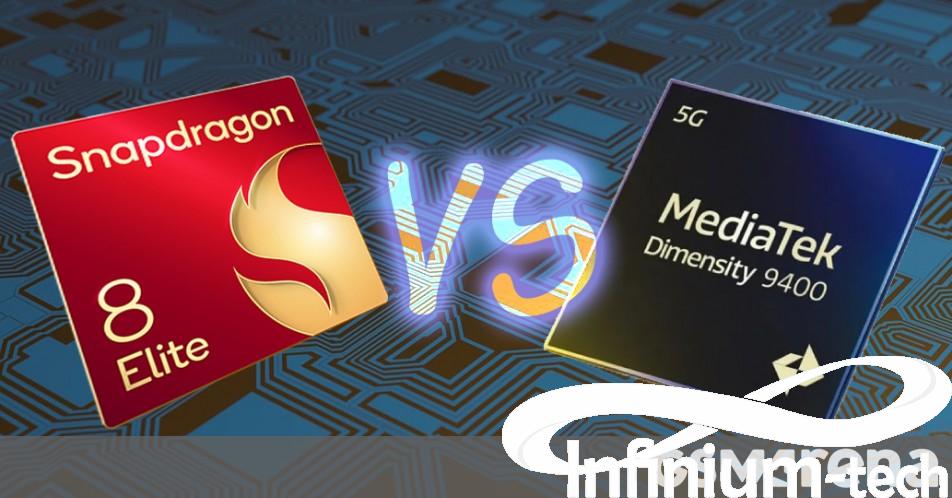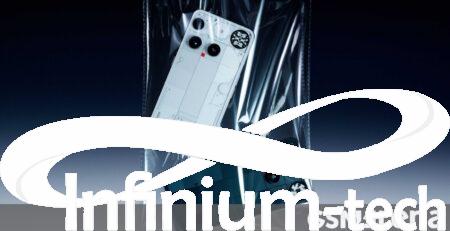Snapdragon 8 Elite vs. MediaTek 9400 benchmark showdown | Infinium-tech
The flagship chipsets for 2025 have arrived – Qualcomm’s Snapdragon 8 Elite and MediaTek’s Dimensity 9400. Even though most phones running on these chips will see the light of day in 2025, we have two phones using the most powerful SoCs – the Realme GT7 Pro with the Snapdragon 8 Elite and the Vivo X200 Pro with the Dimensity 9400.

Historically, Qualcomm’s chips have outperformed MediaTek’s, but recently the Taiwanese company has been gaining ground. The latest Dimensity runs an octa-core CPU with 1x 3.63 GHz Cortex-X925 and 3x 3.3 GHz Cortex-X4 and 4x 2.4 GHz Cortex-A720 cores and uses an Immortalis-G925 GPU.
The Snapdragon 8 Elite, on the other hand, boasts of in-house designed Orion cores – 2x 4.20 GHz Orion v2 Phoenix L + 6x 3.53 GHz Orion v2 Phoenix M. These are significantly different CPU clusters than the Dimensity and are clocked higher. Very. The Adreno 830 GPU has also received some attention and promises to be a huge jump over the previous generation.
But how do these two chips match up against each other in terms of performance? Here are the benchmarks
As expected, the Snapdragon 8 Elite shows better CPU performance in both single-core and multi-core workloads. In Geekbench 6, the SD8 Elite outperforms the Dimensity 9400 by 10% in the multi-core scenario and by 15% in the single-threaded scenario.
However, in combined workloads like AnTuTu 10, the Dimensity 9400 outperforms Qualcomm’s silicon by 6%. We have to point out that for all practical intents and purposes, these kinds of differences make very little difference to performance.

In the GPU-heavy 3DMark benchmark, the Dimensity 9400 trails the SD8 Elite by 7-8%, depending on the benchmark, which in this case are Wildlife Extreme and Solar Bay.
It’s quite surprising to see the Immortalis GPU beating Adreno even by a small margin.
Keep in mind that these are results from pre-market units, so once we get more phones running these SoCs, we may see a change in the rankings. Still, we suspect we will see huge disparities.
Either way, we see this as an absolute win as users can now rest assured that they won’t be sacrificing raw performance if they choose a Dimensity 9400-powered smartphone. Both chipsets are powerful enough to run just about anything you throw at them.














Leave a Reply